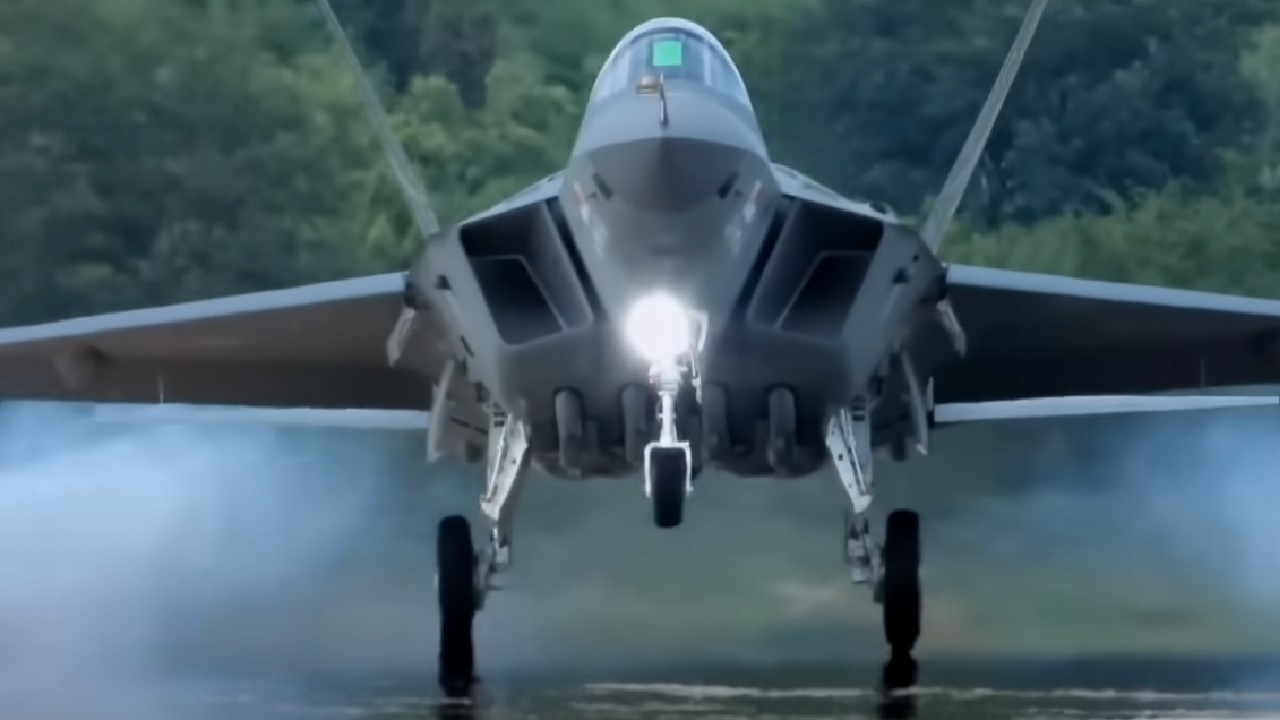In January, South Korea’s KF-21 Boramae “Fighting Hawk” successfully completed its first supersonic flight, showcasing the increasing strength of the ROK’s Air Force. The test was carried out by the 3rd Flying Training Wing of the Republic of Korea Air Force, or ROKAF, near the Sacheon airport in the country’s south.
This success follows more than 80 test flights of the Boramae in recent years. While the KF-21 is technically a fourth-generation airframe, its radar-evading capabilities bring it into the stealth fighter arena alongside the U.S. F-35 and Chinese J-20 jets.
Positioned near the PRC and the Hermit Kingdom, South Korea considers aerial defense capabilities to be paramount to its security.
KF-21: A Mostly Indigenous Jet
South Korea plans to replace its aging fleets of F-4E and F-5E fighters with its incoming KF-21 airframes.
The ROKAF hopes to secure at least 120 Fighting Hawks by 2032 to maintain a formidable presence in the skies.
Formerly known as the KF-X program, the KF-21 project was initiated in 2001 by then-President Ki Dae-jung to produce an airframe with more advanced capabilities than the existing KF-16 fighter.
Last year, South Korea’s Defense Acquisition Program Administration revealed that the KF-21 jet was the first fighter to be developed primarily using domestic technology.
Roughly 65% of the KF-21’s parts are manufactured in South Korea, which is a major feat for a nation that does not have an extensive history of producing fighter jets.
Perhaps two of the most significant components of the fighter are its electronic radar and its infrared target tracker, both of which were developed by the Seoul-based Hanwha Systems.
This Fighter Packs a Punch
Despite its advanced electronics capabilities, Seoul refers to its KF-21 fighter as a 4.5-generation fighter. The Fighting Hawk does not possess an internal weapons bay, a feature standard on its fifth-generation counterparts.
However, internal bays could be incorporated into the fighter’s design later in the development process, and its ordnance capabilities are still very impressive without them.
The Boramae Block II airframe is expected to carry indigenously designed air-launched cruise missiles, including Meteor beyond-visual-range air-to-air missiles, in addition to precision-guided bombs.
The cruise missiles will enable the jet to strike targets outside of an enemy’s air defense system.
According to experts at 19FortyFive, the fighter will also sport an automated collision avoidance system. This safety feature improves the odds of survival for pilots who succumb to high-G maneuvers.
The Boramae’s recent test flight makes Seoul the eighth nation to produce a supersonic fighter. This major feat will aid the ROKAF both defensively and offensively as it navigates its shaky position within reach of Pyongyang and Beijing.
Maya Carlin is a Middle East Defense Editor with 19FortyFive. She is also an analyst with the Center for Security Policy and a former Anna Sobol Levy Fellow at IDC Herzliya in Israel. She has by-lines in many publications, including The National Interest, Jerusalem Post, and Times of Israel.

